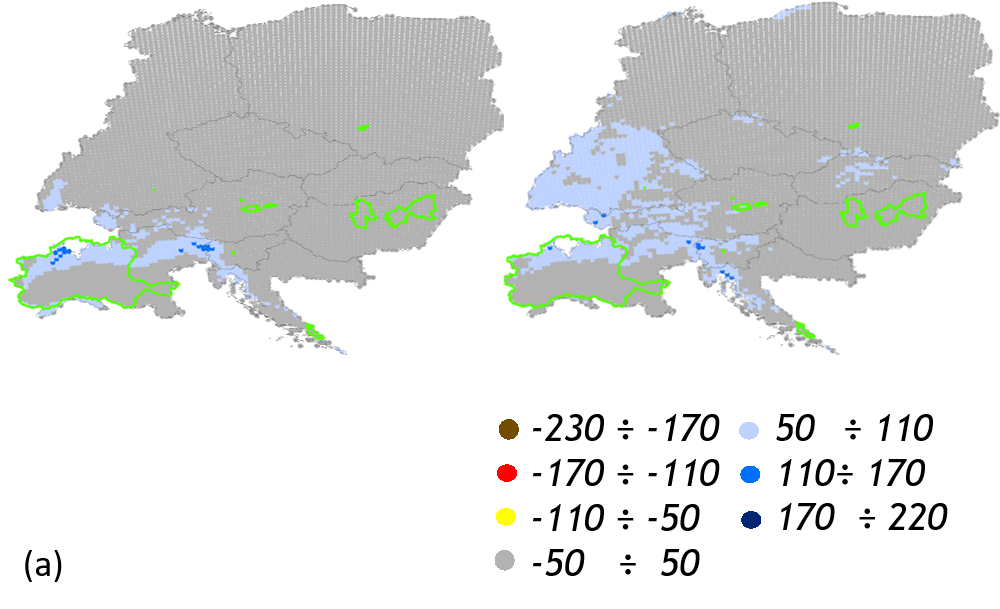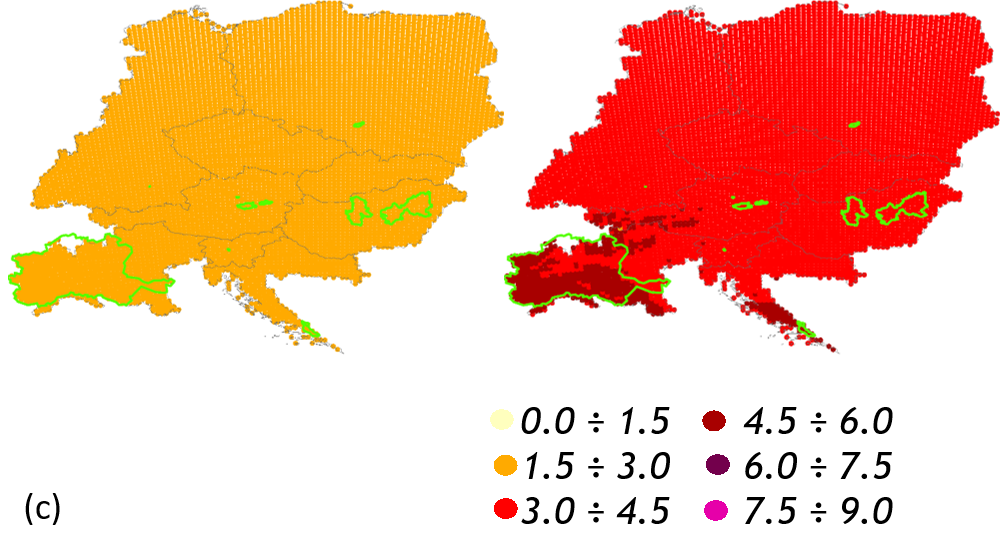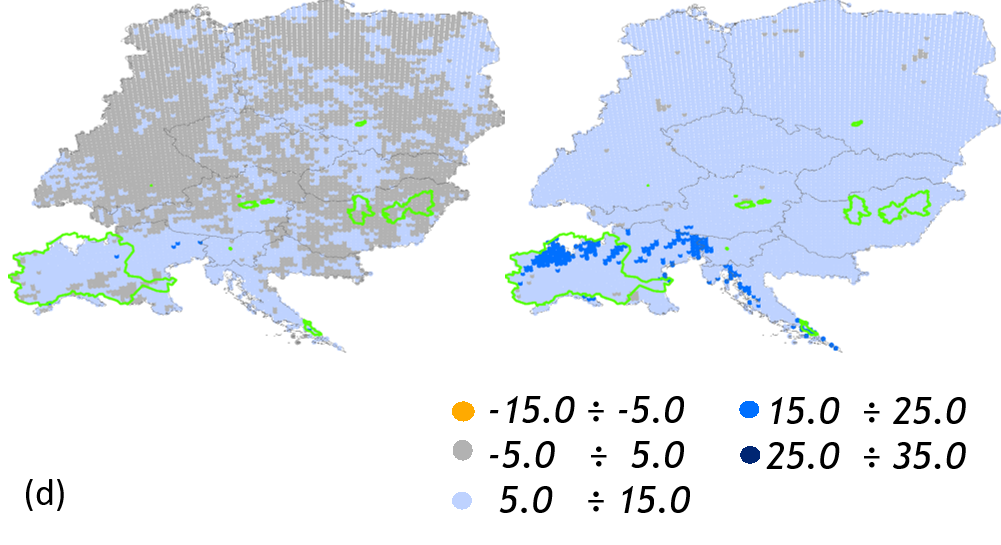In PROLINE-CE, current conditions and expected variations due to climate change in weather patterns regulating water availability and occurrence/severity of water-related events (droughts, floods) have been evaluated. To this aim, a reference set of weather patterns that can be assumed as “proxies” for the potential impacts on drinking water resources and hydrological hazards in Central Europe have been selected; they include seasonal cumulative rainfall and average temperature values respectively assumed as main drivers for water entering or leaving the soil through evapotranspiration dynamics; moreover, yearly maximum 1-day precipitation (Rx1day), maximum number of consecutive days without or with precipitation (CDD and CWD, respectively) are respectively assumed related to events inducing hydrological hazards and to the precipitation distribution strongly affecting soil water budget and then availability in surface and ground- water bodies.

Current conditions are computed by exploiting gridded observations provided by E-OBS initiative (Cornes et al., 2018) while climate projections are based on the outputs of the multi-model ensemble of regional climate models, at the highest horizontal resolution available in Europe, EURO-CORDEX (≈12 km) (https://euro-cordex.net/).
By way of example, Figure 1 shows data concerning seasonal average temperature (Pilot Areas are identified in green) over 1971-2000 time span. The maps clearly highlight spatial patterns across the Central Europe; during Winter (December-January-February, DJF) lower values are primarily observed in high altitude areas (values lower than -3°C) like Alpine Region while, on plain sites, the latitude tends to regulate values (higher for Mediterranean countries with values ranging between 3° and 10°C). During the Summer (June-July-August, JJA), large parts of the domain experience values crossing the 20°C while, in Alpine areas, values remain between 3° and 10°C. It worth stressing that reported values are main function of horizontal resolution of E-OBS datasets (about 30 km) while locally they could result significantly different.
In Figure 2, the variations in winter precipitation (a), summer precipitation (b), summer temperature (c) and Rx1day (d) are displayed as ensemble-median anomalies between the end of the century 2071–2100 and a reference time span 1971–2000 under “mid-way” RCP4.5 and the more pessimistic but “business as usual” RCP8.5. Concerning winter precipitation, an increase is assessed in Alpine Regions and surrounding areas while, for Summer precipitation, the opposite occurs (mainly under RCP8.5) in the southern part of the area.


A clear increase in temperature is recognizable over the entire domain (c); it is even more evident under more severe scenario and in Southern part of the domain. Finally, a clear growth in maximum daily precipitation is detectable over the entire area, again, mainly under RCP8.5 and over the Alpine region. The reported variations confirm the main remarks identified by ETC/CCA Technical Paper 2018/41 for the Central Europe area with consequently a higher probability of more frequent and severe drought events, a decrease in snow and ice coverage mainly on the Alpine arc and an increase in frequency and/or intensity of floods.


Of course, they can result in strong variations in water availability in terms of impacts, location and timing. In this regard, the evaluation of the EU Adaptation Strategy undertaken by the European Commission (2018) stresses the relevant role of transnational programmes in promoting cooperation projects on Climate Change Adaptation. Furthermore, this document highlights that “approaching Climate Change Adaptation (CCA) as a global public good to tackle cross border risks may reveal opportunities to strengthen international cooperation on resilience”.
References:
Cornes, R., G. van der Schrier, E.J.M. van den Besselaar, and P.D. Jones. 2018: An Ensemble Version of the E-OBS Temperature and Precipitation Datasets, J. Geophys. Res. Atmos., 123. doi:10.1029/2017JD028200
Ramieri et al. (2018) Adaptation policies and knowledge base in transnational regions in Europe ETC/CCA Technical Paper 2018/4
Aknowledgments:
We acknowledge the E-OBS dataset from the EU-FP6 project UERRA (http://www.uerra.eu) and the Copernicus Climate Change Service, and the data providers in the ECA&D project (https://www.ecad.eu)
We acknowledge the World Climate Research Programme’s Working Group on Regional Climate, and the Working Group on Coupled Modeling, former coordinating body of CORDEX and responsible panel for CMIP5.
